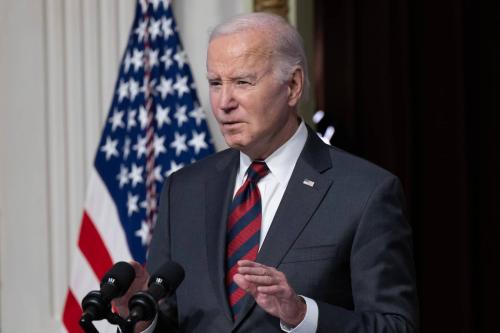Even though the 1988 transition featured a handover from a two-term president (Ronald Reagan) to his own vice president (George H.W. Bush), experts at Brookings recognized that even an intra-party transition between political allies suffered from a lack of communication between outgoing presidential aides and their counterparts in the new administration.
Lawrence Korb, who was at the time Director of the Center for Public Policy Education at Brookings, saw that in many transitions, a good number of White House aides had little or no prior government experience. Even those who had worked in the federal government had not worked in the White House, and had to learn on the job.
Korb suggested a series of “Transition Conversations” sponsored by Brookings, in which incumbent White House staff members would meet with the incoming aides to discuss policy coordination and the experience of serving in the Office of the President. In his proposal, Korb wrote, “They (White House aides), perhaps most of all new appointees, need an orientation opportunity and are least likely to get one.”
##1##Korb wrote a series of memoranda to Brookings scholars suggesting a series of three dinners; one focusing on national security policy, one for domestic economic policy, and the last for organizing the Office of the President. The Brookings directors and staff that would be in charge of facilitating each dinner conversation were Korb himself and John Steinbruner for national security, Charles Schultze for domestic economic policy, and Stephen Hess and Thomas Mann for organizing the Office of the President.
In addition to working with Korb’s “Transition Conversations,” Hess and Brookings Fellow James Sundquist were panel members in 1988 for a study on the presidency. The study was part of an orientation program sponsored by the National Academy of Public Administration and sought to answer questions such as “How can the President most effectively fulfill his role of chief executive officer,” and “How can the President’s staff and Cabinet members work together to meet the President’s needs and their own executive responsibilities?”
The 1988 presidential transition allowed Brookings to exercise its power as a convening organization to bring experts together, offer nonpartisan advice, and assist a new president in achieving a smooth transition of power.



Commentary
Reagan to Bush: Brookings and the 1988-89 Presidential Transition
December 11, 2008